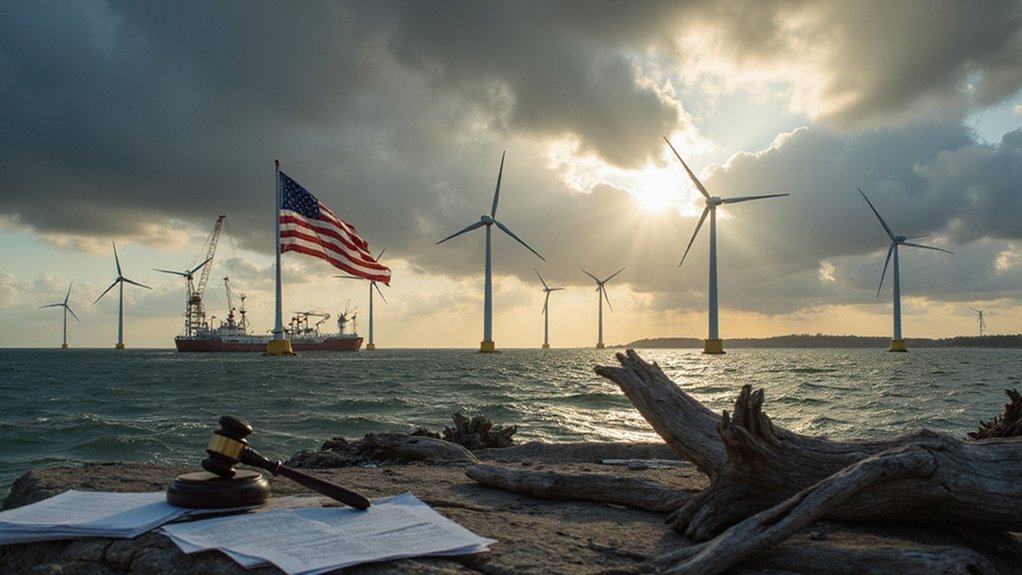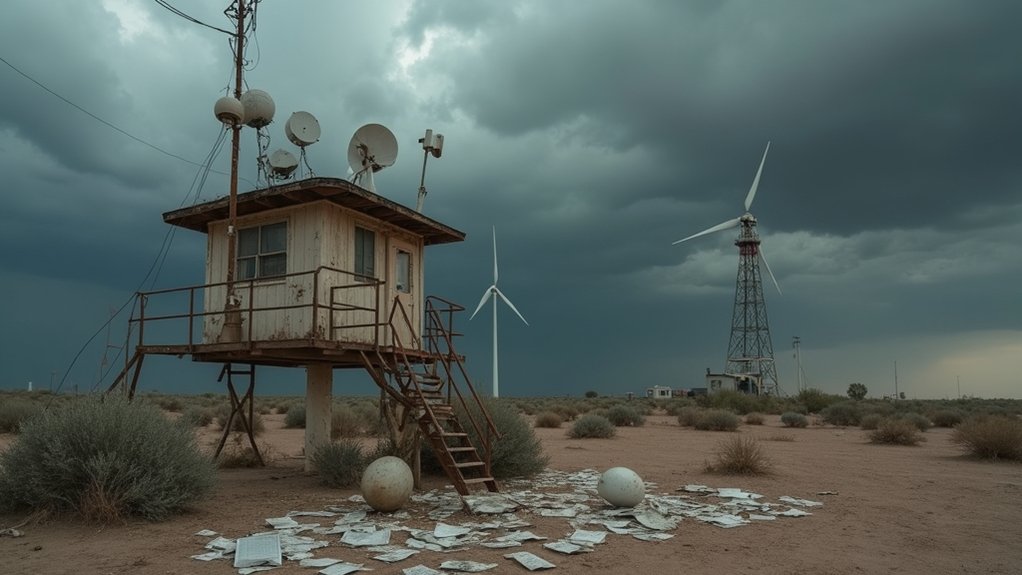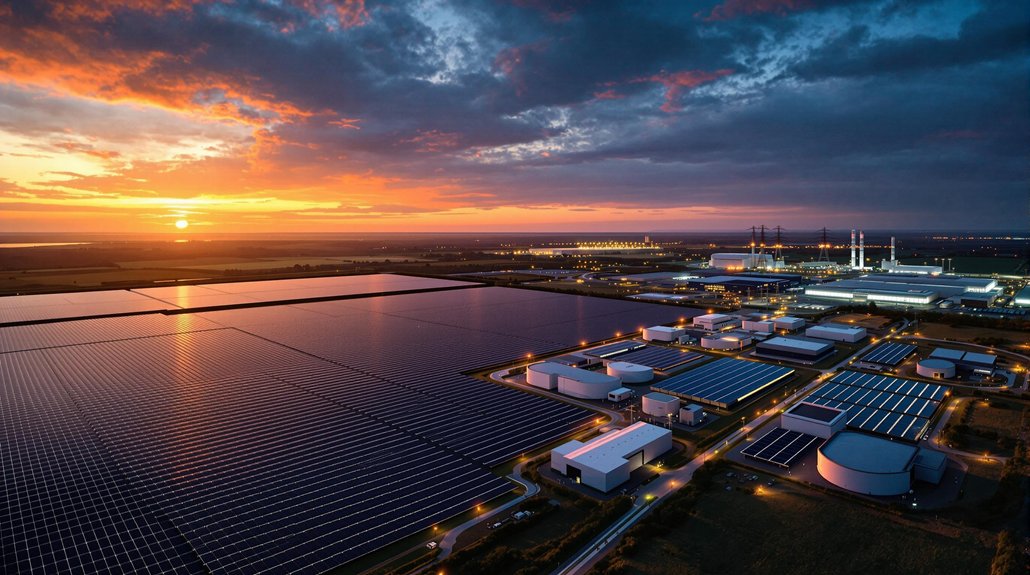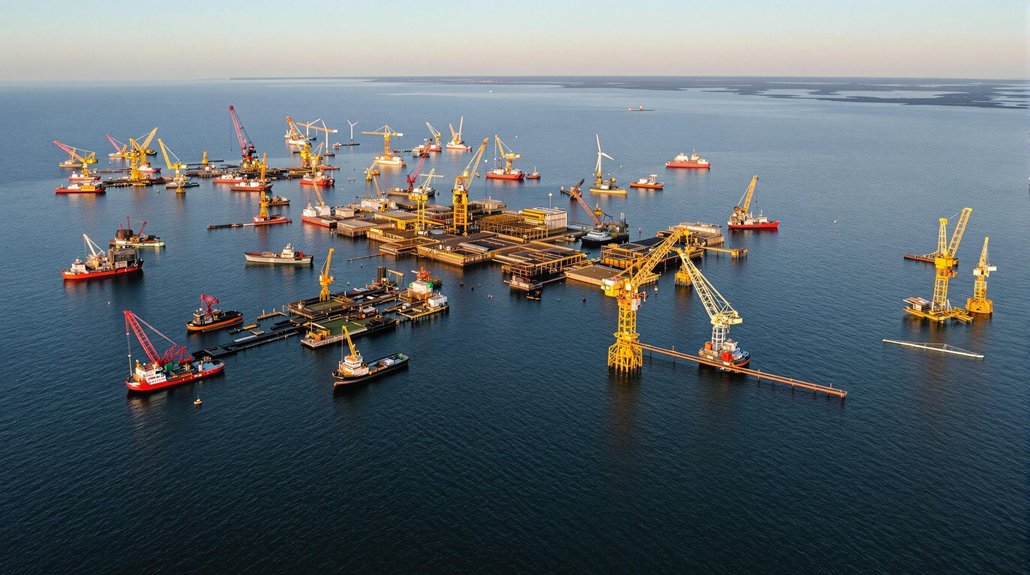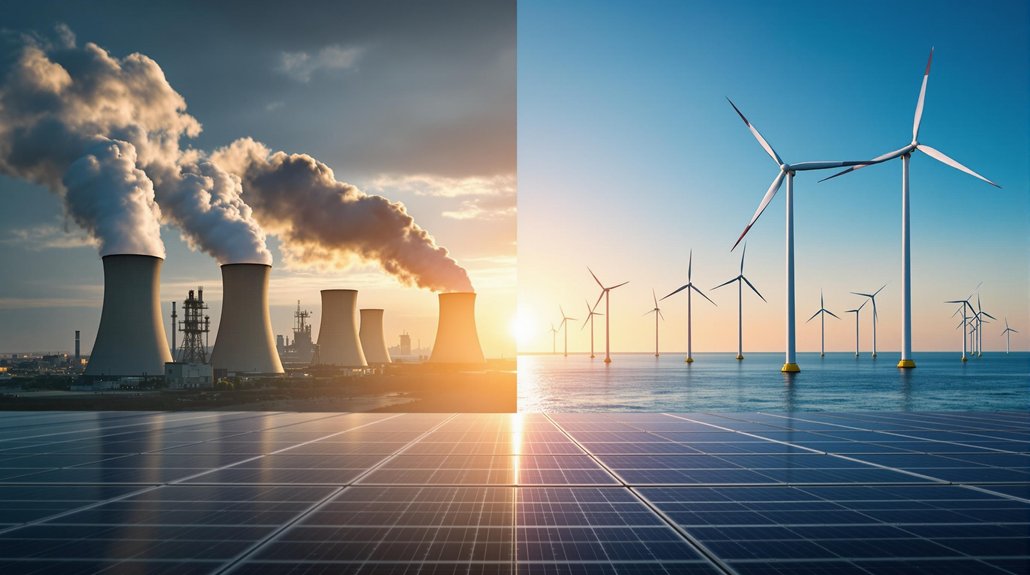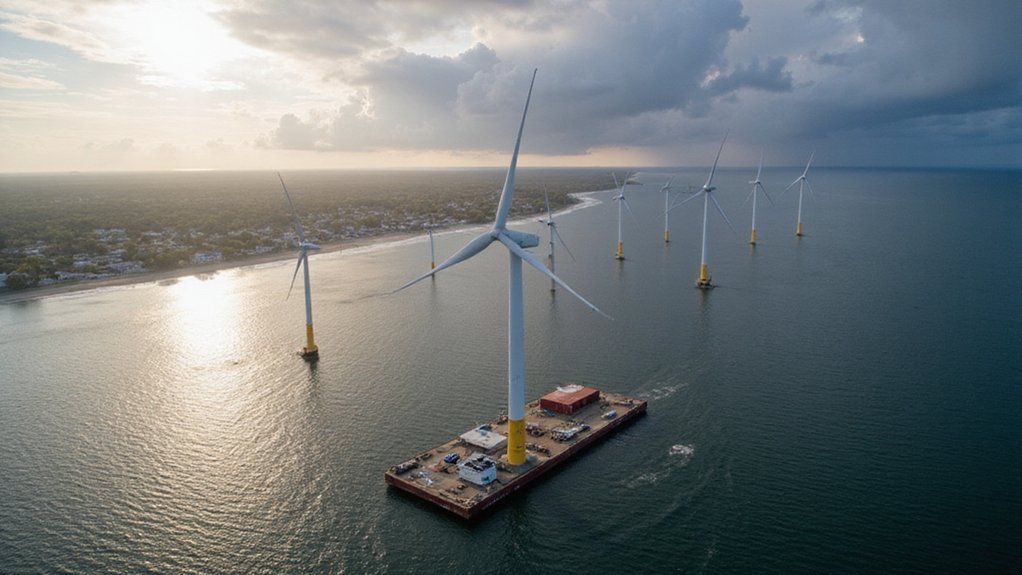Eighteen states and Washington D.C. are suing President Trump over his executive order freezing wind energy permits. Led by New York Attorney General Letitia James, the May 2025 lawsuit claims Trump exceeded his authority by halting federal approvals for wind projects. States argue the order threatens billions in investments and thousands of jobs while undermining climate goals. The White House defends the action as restoring “America’s energy dominance.” This legal battle could determine the future of renewable energy development.
Why are 18 states and Washington D.C. taking President Trump to court? They’ve filed a lawsuit challenging an executive order that halts all new federal approvals for wind energy projects. The legal battle began on May 5, 2025, when New York Attorney General Letitia James led a coalition of states against the Trump administration.
The executive order, signed during Trump’s first day back in office on January 20, 2025, freezes all new and renewed federal permits for both offshore and onshore wind projects. It stops leases, loans, and other approvals while creating an undefined multi-agency review process with no timeline.
The coalition includes New York, Massachusetts, Arizona, California, Colorado, Connecticut, Delaware, Illinois, Maine, Maryland, Michigan, Minnesota, New Jersey, New Mexico, Oregon, Rhode Island, Washington, and the District of Columbia.
States argue the directive is unlawful and that Trump lacks authority to unilaterally shut down wind energy permitting. They claim the order threatens billions in investments, thousands of jobs, and hampers efforts to reduce greenhouse gas emissions. Wind energy helps avoid greenhouse gas emissions during operation while providing competitive electricity rates compared to other sources. The lawsuit specifically alleges the administration violated the Administrative Procedure Act and other key laws.
The impact is already being felt. At least one offshore wind project has stopped despite having prior permits. The wind industry faces destabilization due to regulatory uncertainty, putting clean energy progress at risk.
The Trump administration has pushed back against the lawsuit. White House spokesperson Taylor Rogers criticized Democratic attorneys general, claiming they’re using “lawfare” to stop the president’s energy agenda. The administration argues they’re restoring “America’s energy dominance” through a “popular energy agenda.” Critics have pointed out that the directive directly contradicts another executive order signed the same day that declared a national energy emergency requiring expanded domestic production.
The states are asking a federal judge to declare the order unlawful and prevent federal agencies from implementing it. Environmental groups like Earthjustice support the challenge. The outcome of this case could set an important precedent for federal authority over renewable energy development.
This legal battle represents a significant test of executive power over energy policy as states fight to protect their clean energy goals and investments.
References
- https://www.windtech-international.com/industry-news/us-states-challenge-trump-order-halting-wind-energy-approvals
- https://www.offshorewind.biz/2025/05/06/18-state-coalition-sues-trump-administration-over-block-on-wind-energy-projects/
- https://planetprinceton.com/2025/05/05/new-jersey-joins-multistate-lawsuit-against-trump-administration-over-wind-energy-freeze/
- https://earthjustice.org/press/2025/earthjustice-on-state-attorneys-general-challenge-to-protect-wind-energy-development
- https://www.pbs.org/newshour/politics/states-sue-trump-for-executive-order-blocking-wind-energy-development
